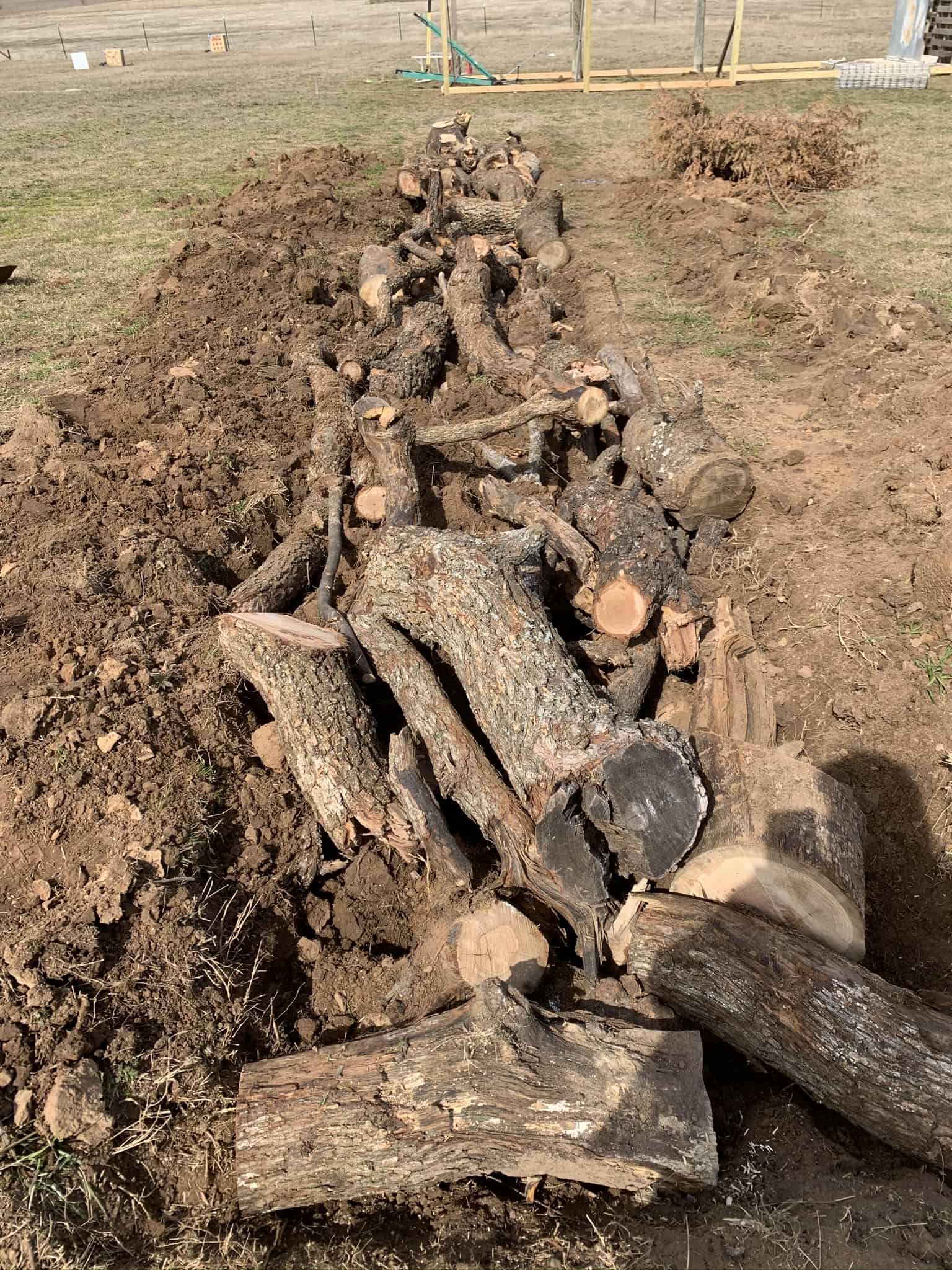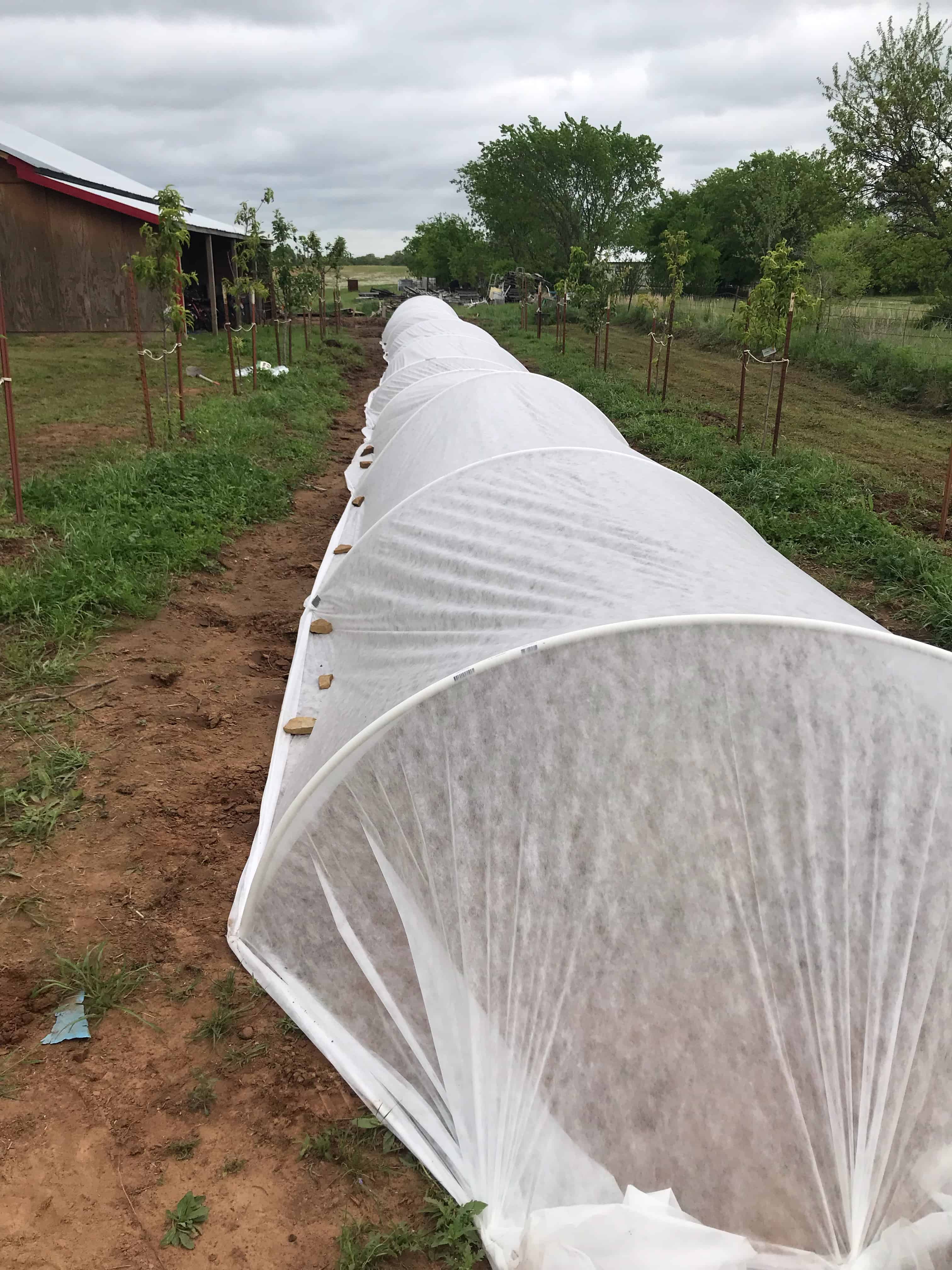Building a Hugelkultur Garden
As a lifelong gardener, I absolutely love doing experimental gardening. I always do my research, but if I happen to hear about a new (or new to me) method of gardening, I am always up for a challenge. This season, I am focusing on a couple of new experimental gardening methods and hugelkultur happens to be one of them. You can also read about my new keyhole garden.
Step 1 – Location and Preparation
As with any other gardening method, your location is very important. However, with hugelkultur gardening, it may be more important just based on the fact that this kind of garden bed would be way harder to relocate! Most gardens need a mostly sunny location so let that be your guide.
When you prep your site, you want to get it ready to accept all of the wood that is required. Now, I’ll stop here and tell you that there a many different ways to utilize a hugelkultur gardening method. Some people just put everything into a raised bed. I am simply building it up by stacking.
I began by digging a trench. The reason for this is that I want to be able to capture as much rain water and ground water as possible. We dig our trench about a foot deep, but that sizing is up to you. The timing was actually terrific. I was also in the process of building a rocket mass heater and I needed to dig up a bunch of our native clay, so ….time to build the hugelkultur bed!
We dig our trench about 30 feet long and about 4 feet wide. I already knew what I wanted to plant on it and I placed it alongside my hoop house, so those dimensions just seemed right. You can see from the pictures that we were already collecting and holding plenty of water.
How to Fill the Hugelkultur Garden
The main item on your fill list will be wood-trees; trunks, branches, limbs, sticks. My mom’s ranch had a bunch of downed trees, some that had been down for a while and that was perfect. It took us about 3 HUGE trailer loads to get enough wood to fill it to my satisfaction. Here again, it’s all up to you. It doesn’t have to be tall, but it is absolutely going to shrink over time as the wood decomposes. Plus I wanted as much growing area as possible.
The other thing that we brought in by the trailer load was muck from horse stalls. The poop-covered straw that we brought in is a perfect addition to the hugelkultur garden. As a note, if the manure is very fresh, you just want to make sure it is low enough in the bed that the roots of your plants won’t touch it very soon.
Stacking the Wood
You want to have your largest pieces at the bottom. I began by cramming all of the huge trunk and branch pieces in the trench Tetris-style, while my husband was on the chainsaw cutting them up. You really want to fit them in a s closely as possible. Above that we just continued stacking the wood. The higher we got, the smaller the wood. I will tell you that, yes, this is laborious work, but it is well worth it. If you build your hugelkultur bed very well in the beginning, it will last you, potentially, multiple decades.
The Next Layers
After the wood was all stacked in, we started adding the other layers. The straw and horse manure was the next layer. We used a 16 foot trailer worth of the stuff. We made a nice thick layer over the entire mound, making sure that we ended up with a slope off of the top. That was specifically so that we wouldn’t have as much trouble with erosion.
Compost and Leaves
I have been growing a MASSIVE bed of compost for about a year now and we used every bit of it to completely cover our hugelkultur garden. Luckily, my husband was on the tractor that day and it only took about 20 minutes to get it covered! I sent my boys to the back of the property that morning to get me a BUNCH of oak leaves. We basically sandwiched them in between layers of compost.
The Final Layer
Anyone who follows me knows that I tend to make my own soil mix. This time I had the boys involved as well. For an garden bed soil mix I use peat moss (soaked) with mushroom compost and organic topsoil. It took about half the day, (mostly because of soaking the peat moss) but we got it all mixed and Logan, my 14 year old, got it laid into all of the major planting areas. I made an area on the very top, plus a ring around the middle and the bottom, all the way around.
I plan to plant all of my squashes and melons on my hugelkultur garden this season and test it all out. I am honestly SUPER excited to see how everything goes. The whole idea behind the hugelkultur gardening method is that the wood soaks up and holds onto all of the moisture; rainwater, groundwater, etc. It is then wicked up through the soil to the roots of your plants.
The other half of this magical gardening method is that the trees will decompose, adding nutrients to the soil. I can assure you, that if this bed works out well this season, you will absolutely see LOTS more of them popping up around our farm! Don’t tell my husband, I’ll try to break it to him a little at a time!
Don’t Miss Anything!!
Be sure to check out DIY Farm Projects – Awe-Inspiring Skills You Need to Love as well as 9 Gardening Tips – Getting Started *Great Success for more great related information.
MORE WAYS TO CONNECT
We also, as a homesteading family, have a variety of blogs that might interest you. A Life on the Farm focuses on the more personal side of the homesteading life. We discuss subjects like family, parenting, relationships, homeschooling, cooking, canning and so much more.
Two Oaks Farm Talk concerns the more technical side of homesteading. We discuss subjects like gardening, food prep, and farm building and construction with lots of tutorials!
Farm Raised Family is basically a hub for everything under the Two Oaks Farmstead umbrella. You can learn a great deal about all parts of the farmstead there. The Farm Raised Family blog focuses on financial matters such as budgeting, saving, and more and on current events affecting families.
You can also have a more in depth look at all that we do by visiting our Two Oaks Farmstead YouTube Channel and be sure to subscribe so that you don’t miss a thing!
Farm Life and Freedom is the new podcast we are in the process of launching! It is going to be so much fun! You could also check in with our Farm Life and Freedom Youtube Channel.
Two Oaks Farmstead is the farm store… the one that holds the umbrella! Check us all out and join us, not only on our blogs and Farm Life and Freedom podcast but come join the fun on Facebook, Instagram, Twitter… wherever you get social!





Do you have any newer images of your grape arbor now that the vines have had time to fill it up? I’d love to show my husband what it would look like. Trying to convince him that this would be a great option for our vines. Thanks!
Not right now, because they are dormant, but I would imagine that I should have very nice pic options this coming spring! I can’t wait! Grapes take a little while to get going. That’s why I wanted to go ahead and get this arbor handled. I’m looking forward to years of a beautiful grape arbor and yummy grapes! Thank you for your comment and I’d love to know if you end up building one!